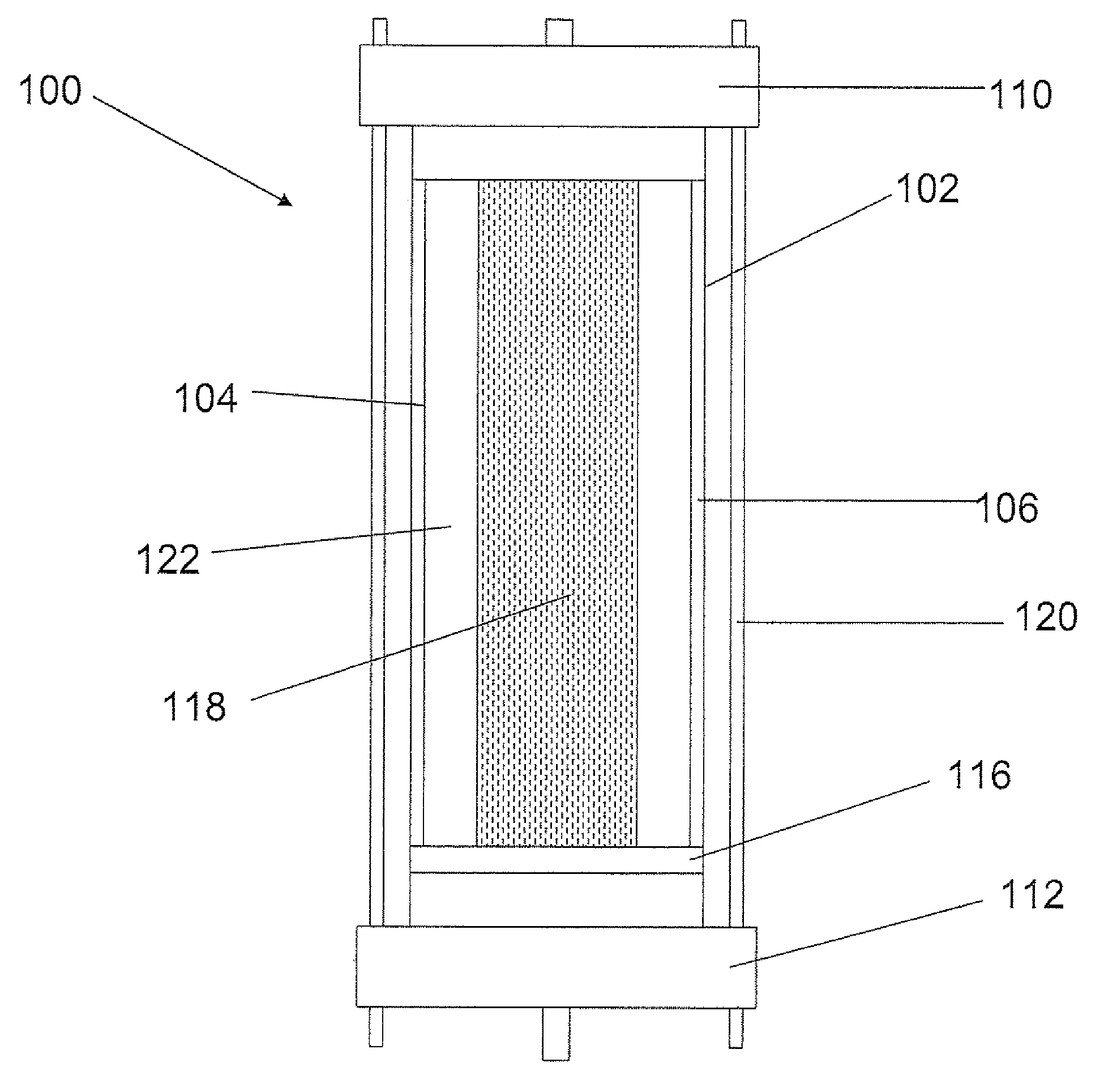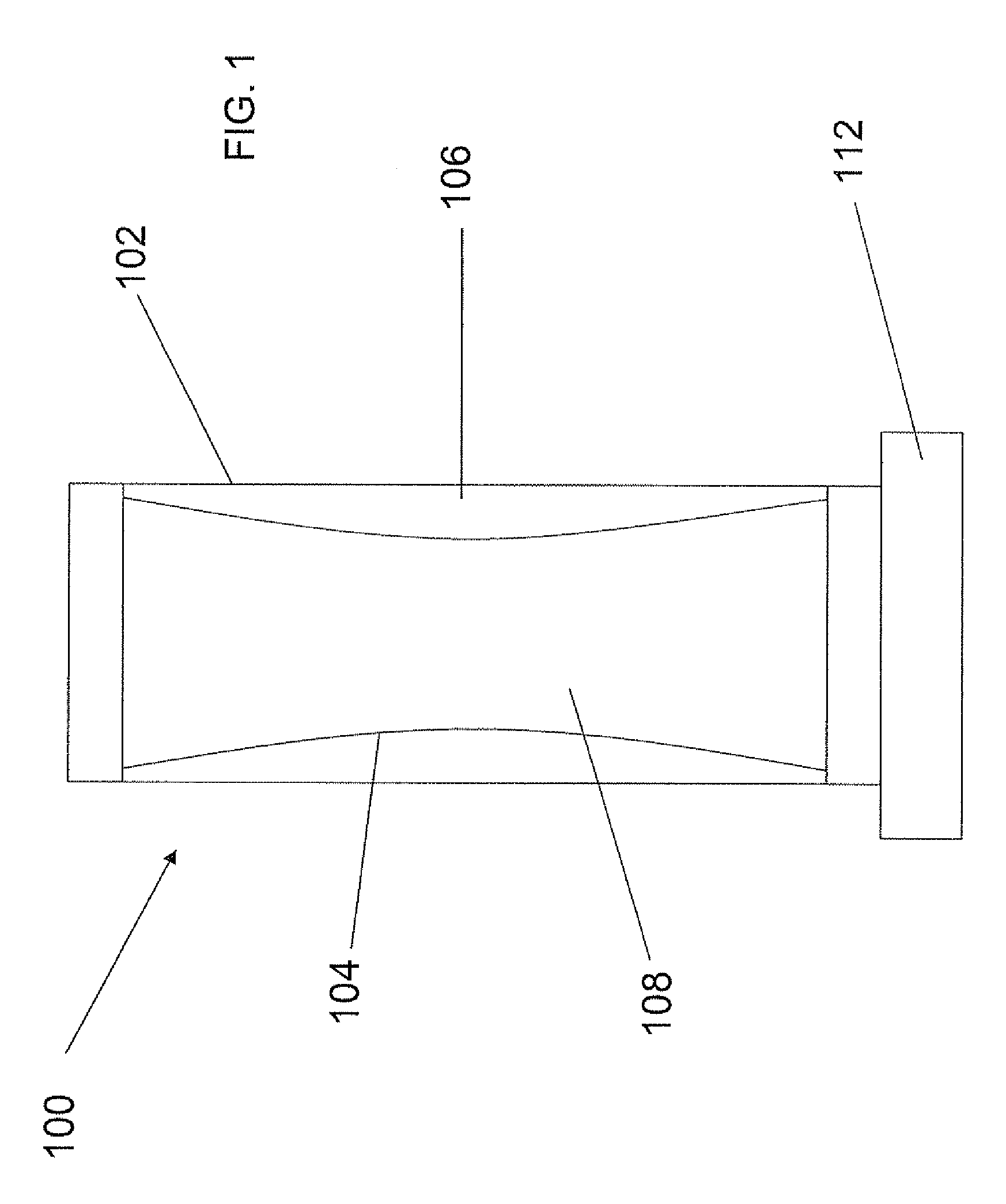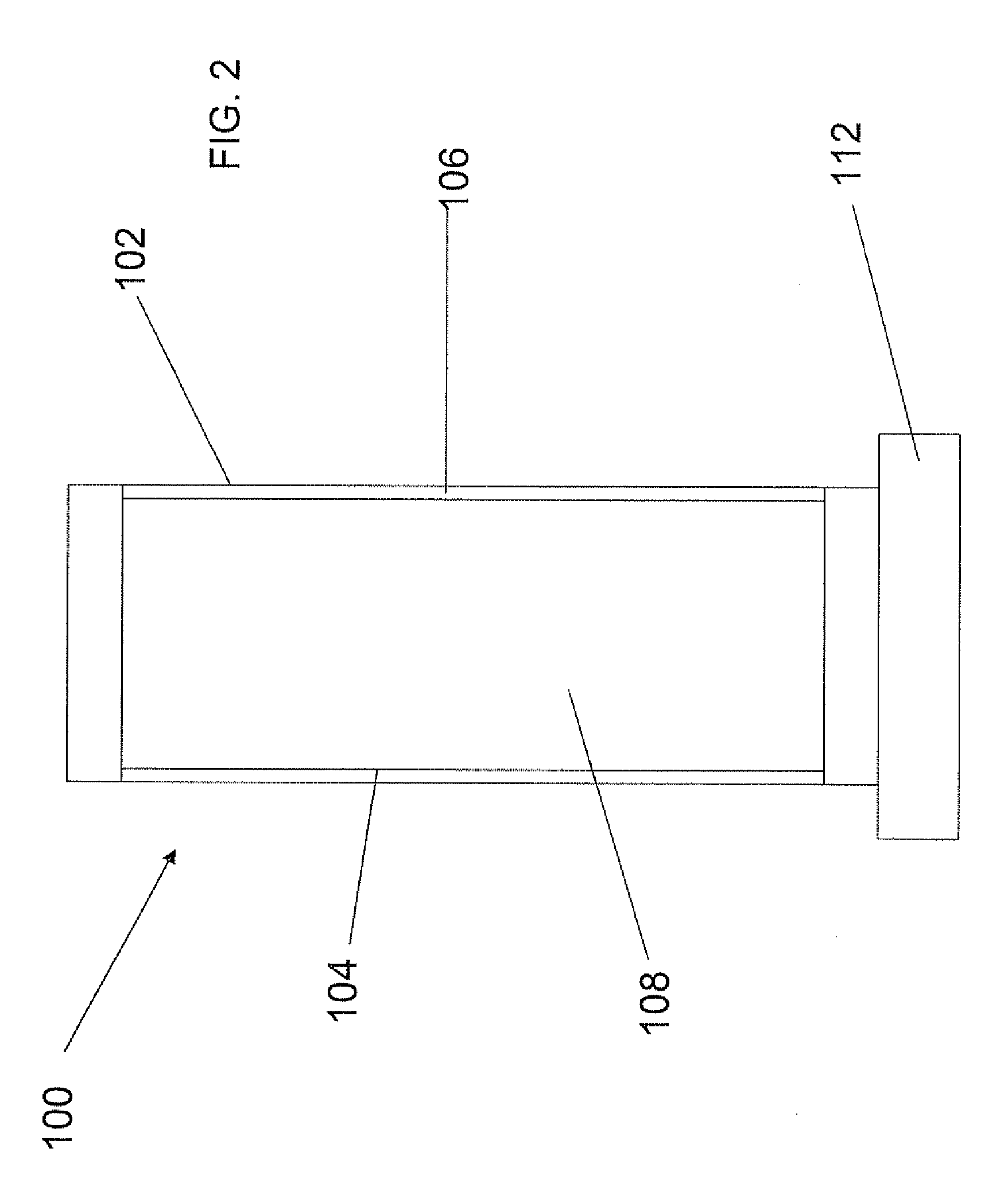Soot Radial Pressing For Optical Fiber Overcladding
- Summary
- Abstract
- Description
- Claims
- Application Information
AI Technical Summary
Benefits of technology
Problems solved by technology
Method used
Image
Examples
example 1
[0041]An optical fiber preform was made using an apparatus having a rigid cylindrical outer wall and a flexible inner wall. The rigid cylindrical outer wall was made of aluminum having an inner diameter of 4 inches, a length of 18 inches, and a wall thickness of ¼ inch. The flexible inner wall was a latex rubber tube having a diameter of about 2.5 inches in the unstressed state. The top and bottom ends of the latex rubber tube were wrapped over the top and bottom ends of the aluminum cylinder. The apparatus further included top and bottom aluminum end caps, each end cap having a thickness of about 1 inch, a center hole to accommodate a core cane, and four peripheral holes for accommodating threaded rods.
[0042]The air between the flexible inner wall and rigid outer wall was substantially removed so that the outside diameter of the flexible inner wall was essentially the same as the inside diameter of the rigid outer wall. Then a one inch think, open-pored silicone rubber foam plug wi...
PUM
| Property | Measurement | Unit |
|---|---|---|
| Temperature | aaaaa | aaaaa |
| Fraction | aaaaa | aaaaa |
| Fraction | aaaaa | aaaaa |
Abstract
Description
Claims
Application Information
 Login to View More
Login to View More - Generate Ideas
- Intellectual Property
- Life Sciences
- Materials
- Tech Scout
- Unparalleled Data Quality
- Higher Quality Content
- 60% Fewer Hallucinations
Browse by: Latest US Patents, China's latest patents, Technical Efficacy Thesaurus, Application Domain, Technology Topic, Popular Technical Reports.
© 2025 PatSnap. All rights reserved.Legal|Privacy policy|Modern Slavery Act Transparency Statement|Sitemap|About US| Contact US: help@patsnap.com



